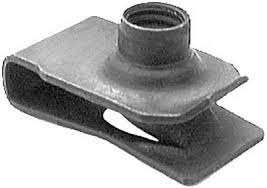Nuts
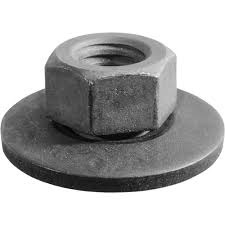
Free-spinning Washer Nut
A type of nut that has a washer already attached to it. This allows the nut to turn freely during installation until the washer comes into contact with the surface, at which point further tightening will engage the locking mechanism. It's a one-piece solution that combines the functionality of a standard nut and a separate washer, simplifying assembly and potentially reducing the risk of omitting a washer during installation.
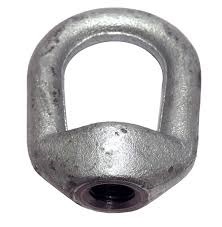
Forged Eye Nut
A type of threaded fastener with a looped head, designed to create a secure lifting or attachment point. It's made by shaping metal, typically steel, using a forging process that involves hammering or pressing, which aligns and compresses the grain structure for enhanced strength and durability. These nuts are commonly used in rigging, securing equipment, and other applications requiring a strong, reliable connection.
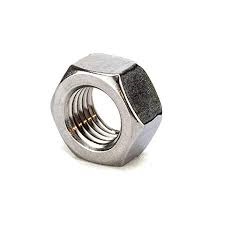
Hex Nut
A six-sided, internally threaded fastener used to secure bolts or screws. It's a common type of nut, often used in various applications due to its strength and ease of tightening with a wrench.
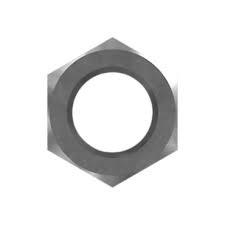
Caterpillar Hex Nut
A hexagonal nut (hex nut) used in Caterpillar (CAT) equipment.
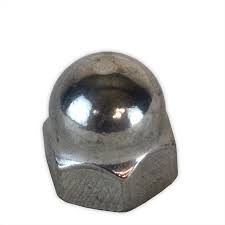
Acorn Cap Nut
A type of fastener that features a domed or rounded top, resembling an acorn's cap. It is designed to enclose the end of a threaded bolt or screw, offering both aesthetic and practical benefits.
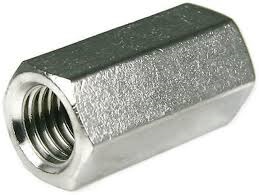
Coupling Nut
Internally threaded on both ends. Primarily used to create longer rod assemblies by connecting shorter pieces end-to-end. They can also be used to facilitate assembly of two fasteners or fittings with external threads.
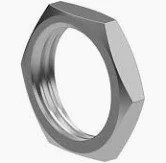
Small Pattern Hex Nut
A type of hex nut with a smaller width across the flats and corners compared to standard hex nuts of the same thread size. This design makes them useful in applications where space is limited or where a smaller wrench is needed for tightening.
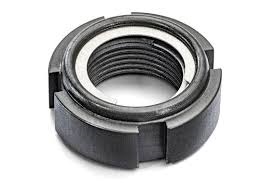
Shaft Nuts
Internally threaded fasteners that used on shafts with an external thread. Shaft Nuts are used to hold bearing assemblies in place around a round shaft. Metric shaft nuts can also be used to secure components such as gears or pulleys onto a shaft.
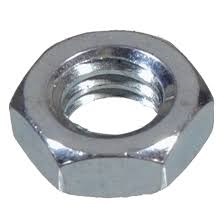
Hex Jam Nut
A type of fastener that is similar to a standard hex nut but thinner, typically half the height. It is often used to "jam" or lock another nut in place, preventing it from loosening due to vibration or rotation. They are also used when a lower profile nut is needed.
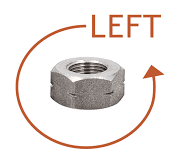
Left-handed Nut
Also known as a  reverse-thread nut, is a type of fastener with threads that tighten when turned counterclockwise, opposite to standard (right-handed) nuts. This design is used in applications where a standard nut might loosen due to rotation or vibration.
reverse-thread nut, is a type of fastener with threads that tighten when turned counterclockwise, opposite to standard (right-handed) nuts. This design is used in applications where a standard nut might loosen due to rotation or vibration.
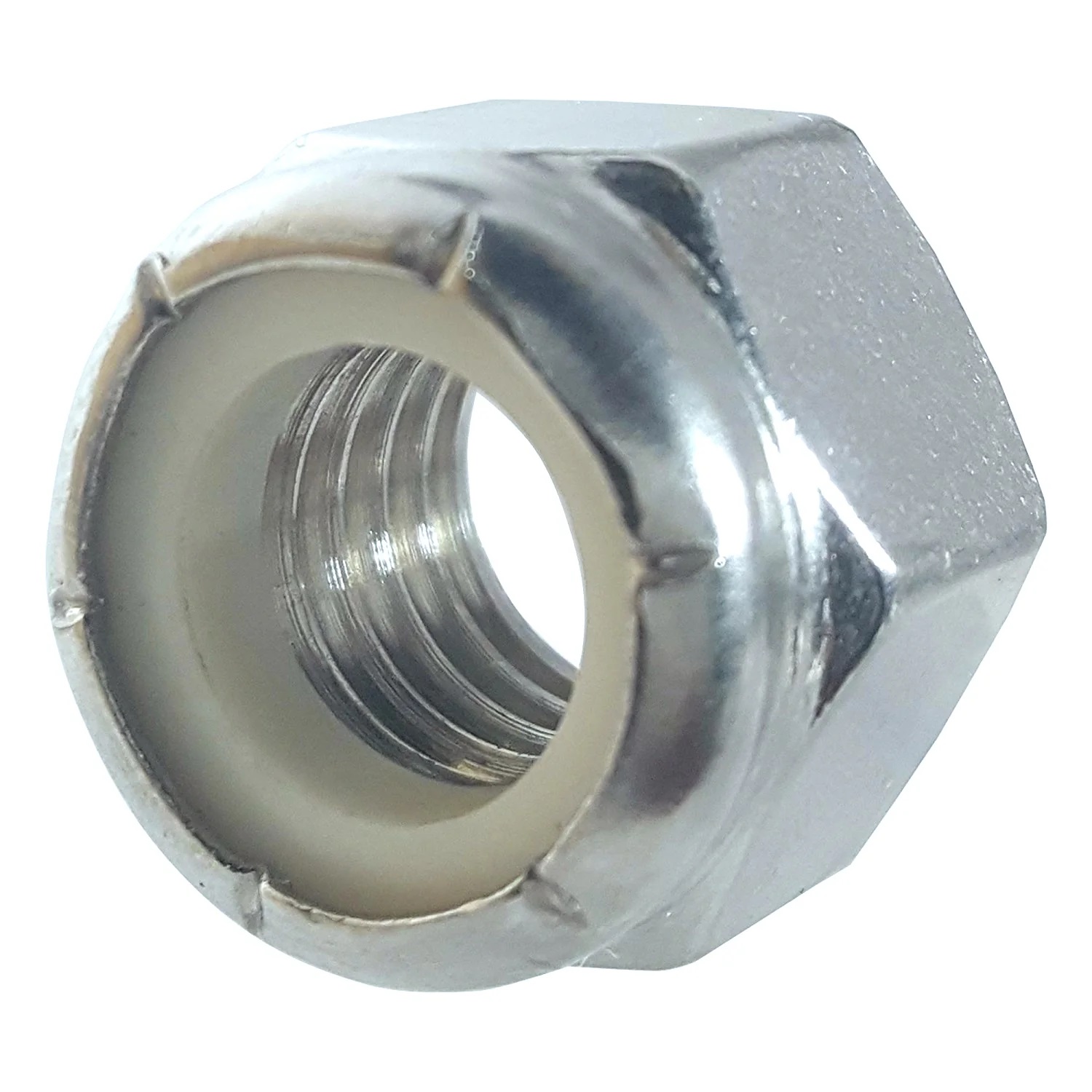
Nylon Insert Nut
A type of lock nut that uses a nylon ring or collar to prevent loosening due to vibration. The nylon insert, with an inner diameter slightly smaller than the bolt's threads, deforms elastically when installed, creating friction that secures the nut and resists loosening. These nuts are commonly used in applications where vibrations are present and a secure, frictional fit is needed.
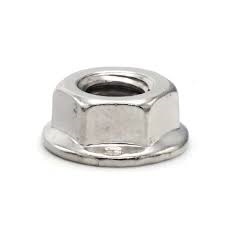
Flange Nut
A type of nut that has a wide flange or collar on one end. This flange acts like a built-in washer, spreading the pressure of the nut over a larger area, which helps prevent damage to the material being fastened and reduces the chance of loosening due to vibration.
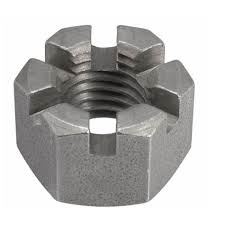
Slotted Nut
A type of nut with slots cut into one or more of its faces. These slots are designed to accommodate a cotter pin or safety wire, which is used to secure the nut and prevent it from loosening under vibration or rotational force. Slotted hex nuts are commonly used in applications where a secure, yet easily removable, fastening is needed, such as in automotive wheel hubs or other machinery.
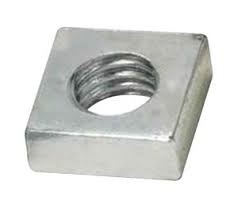
Square Nut
A type of nut with a square shape, designed to be used with bolts or screws, especially those with a square-shaped shaft. They are known for having a larger surface area in contact with the fastened part compared to hex nuts, which can increase resistance to loosening and potential rounding off during tightening and loosening cycles
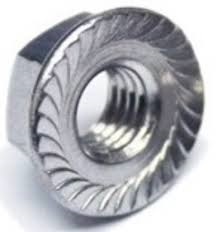
Whiz Flange Locknut
Also known as a serrated flange lock nut or  Whiz-Lock nut, it has a built-in flange and serrations on the underside of the flange. This design allows it to bite into the mating surface when tightened, creating a strong grip that resists loosening due to vibration or torque.
Whiz-Lock nut, it has a built-in flange and serrations on the underside of the flange. This design allows it to bite into the mating surface when tightened, creating a strong grip that resists loosening due to vibration or torque.
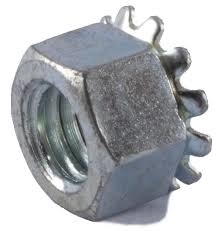
Keps Nut,  K-nut or
K-nut or  Washer Nut
Washer Nut
A nut that has a free-spinning washer attached to it. This integrated washer, often a  star-type lock washer, helps prevent the nut from loosening due to vibration or other forces. Keps nuts are popular because they combine the functionality of a nut and a lock washer into a single piece, simplifying assembly and reducing the risk of losing loose washers.
star-type lock washer, helps prevent the nut from loosening due to vibration or other forces. Keps nuts are popular because they combine the functionality of a nut and a lock washer into a single piece, simplifying assembly and reducing the risk of losing loose washers.
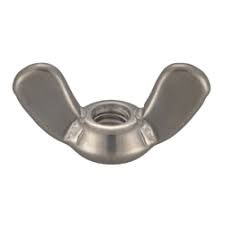
Wing Nut
A type of nut that features two projecting "wings" or tabs on either side, designed for easy tightening and loosening by hand. These wings provide a good grip for fingers, eliminating the need for tools in many applications.
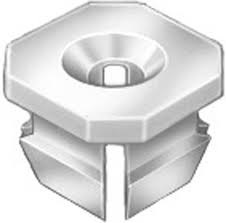
Headlight Bezel Nut
A fastener, often made of nylon, that secures the headlight bezel (the trim surrounding the headlight lens) to the vehicle's body or core support. It's designed to hold the bezel firmly in place while also minimizing the risk of damage to surrounding components.
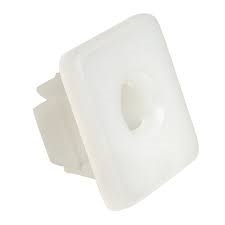
License Plate Nut
A fastener, often made of nylon, used to secure a license plate to a vehicle. It's typically a small, threaded component that screws onto a bolt or stud, holding the license plate in place on the car's bumper or other designated area. These nuts are designed to be durable and weather-resistant, ensuring the license plate remains securely attached, even in harsh conditions.
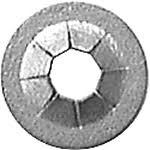
Push Nut
A  push-on fastener or
push-on fastener or  push-on nut, is a type of fastener that secures components to shafts, studs, or other unthreaded parts by pushing it onto the component. It utilizes locking geometry, often in the form of teeth, that bite into the shaft or stud upon installation, providing a secure hold. Push nuts are designed for quick and easy assembly, often replacing traditional threaded nuts and lock washers
push-on nut, is a type of fastener that secures components to shafts, studs, or other unthreaded parts by pushing it onto the component. It utilizes locking geometry, often in the form of teeth, that bite into the shaft or stud upon installation, providing a secure hold. Push nuts are designed for quick and easy assembly, often replacing traditional threaded nuts and lock washers
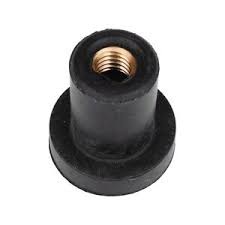
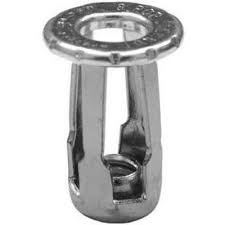
Jack Nut
Known as a Molly Nut, is a type of blind rivet nut used to create a strong, internally threaded fastener in materials that are thin, soft, or brittle. It's designed to expand within the material when installed, providing a secure anchor for screws or bolts, even when access to the backside of the material is limited.
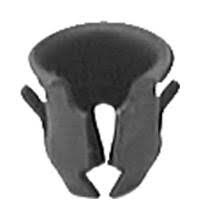
Tubular Nut
A fastener characterized by its cylindrical or barrel-like shape, often used in situations where a standard hex nut might be too bulky or where a more streamlined profile is desired.
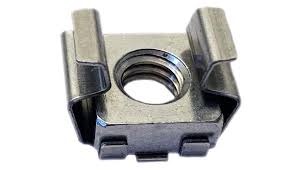
Cage Cut
A fastener that consists of a square nut encased in a spring steel cage. The cage has wings that clip into a square hole, allowing the nut to be easily installed and providing a secure, floating mount for screws. This design is particularly useful for mounting equipment in racks with square holes, like server racks, as it allows for easy installation and adjustments.
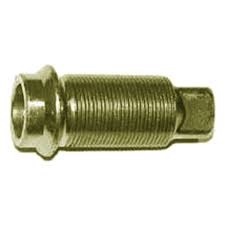
BUDD Wheel Nut
Inner and outer lug nuts used in a Budd-style wheel system (also known as stud-piloted wheels) on trucks and trailers. These systems use a two-piece lug nut design where an inner nut secures the wheel to the hub studs, and an outer nut secures the outer wheel to the inner wheel.
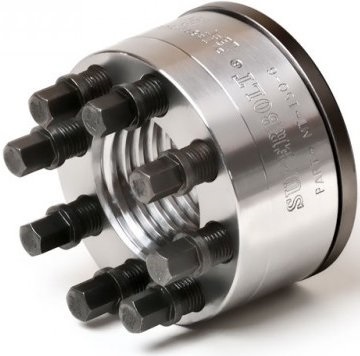
"Super-Nut"
Can refer to several things, but most commonly it refers to Superbolt multi-jackbolt tensioners or a manufacturer of various nuts and fasteners. Superbolt tensioners, a brand registered as Superbolt or Supernut, are designed to simplify tightening large bolted joints by using multiple smaller jackbolts instead of a single large nut requiring high torque.
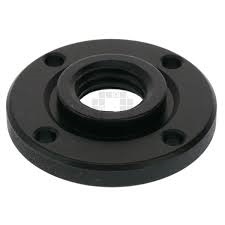
Milwaukee Flange Nuts
Specifically designed for use with angle grinders, acting as a fastener that secures grinding wheels and other accessories to the tool. They feature a built-in flange, which acts like a washer, distributing pressure and providing a more secure hold.
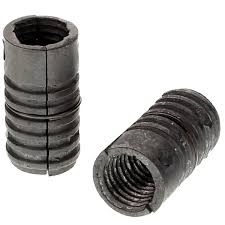
Taper Bolt Nut
Often used for anchoring, that utilizes a bolt with a tapered shank and a matching nut with an internal taper. The tapered design allows for expansion and a secure, interference fit when the nut is tightened, creating a strong and often reusable connection.
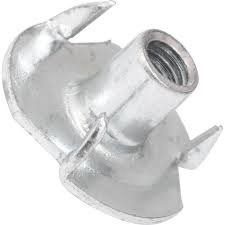
T-nut, Tee Nut or Blind Nut
Used to create a threaded hole in materials like wood, plastic, or composite materials. It has a long body and a flange on one end, often with prongs, that allows it to be easily tapped into a pre-drilled hole and secured.
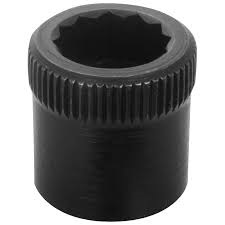
Allen Nut
A  socket nut or
socket nut or  internal wrenching nut, is a type of fastener with an internal hexagonal socket designed for use with an Allen wrench (also known as a hex key or hex wrench).
internal wrenching nut, is a type of fastener with an internal hexagonal socket designed for use with an Allen wrench (also known as a hex key or hex wrench).
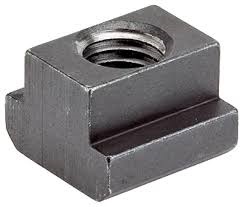
T-slot Nut
A specialized fastener designed to slide into T-slots found on machine tables, aluminum extrusions, and other structures, allowing for secure attachment of components.
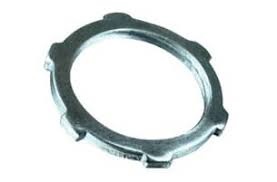
NPT Cast Cocknut
A type of pipe fitting used to secure and seal threaded pipe connections, especially in applications where vibration or movement might loosen a standard threaded connection. It features  National Pipe Tapered (NPT) threads, which are tapered to create a tighter seal when tightened against a mating thread.
National Pipe Tapered (NPT) threads, which are tapered to create a tighter seal when tightened against a mating thread.
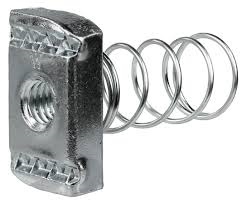
Spring Nut
A fastener designed to provide a threaded anchor point in thin materials where access to the back side is limited. It consists of a nut held within a spring steel cage that allows it to be inserted into a square hole and securely held in place.
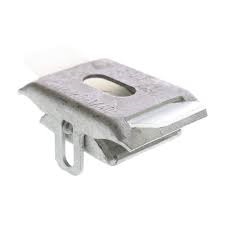
A Caddy Slick Strut Nut
A type of strut nut designed for quick and easy installation of threaded rod and hardware onto standard strut channel profiles. It's a one-piece, universal attachment that eliminates the need for separate springs or washers and can be installed with one hand.







